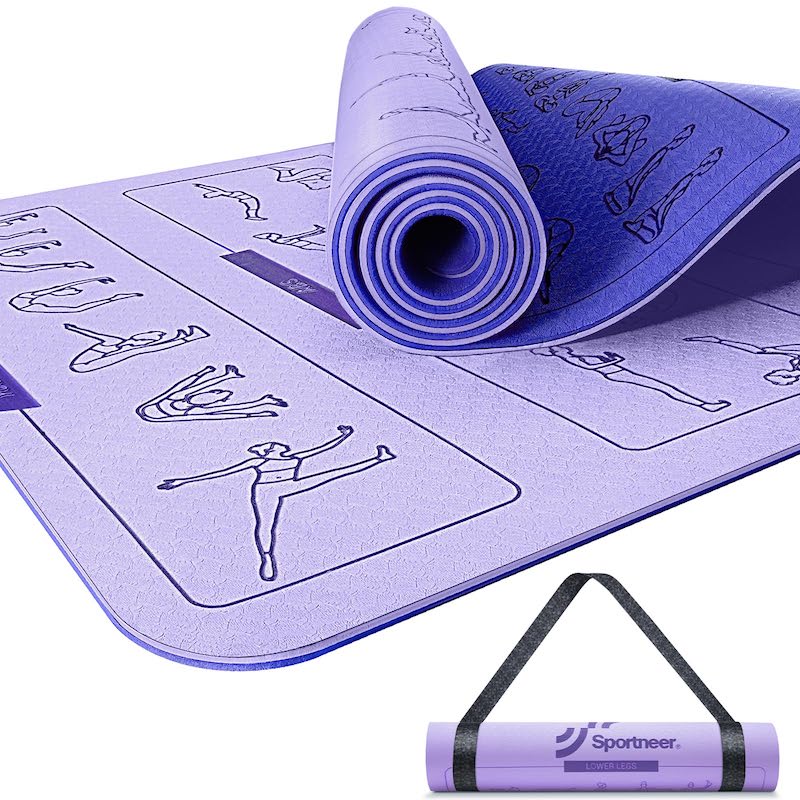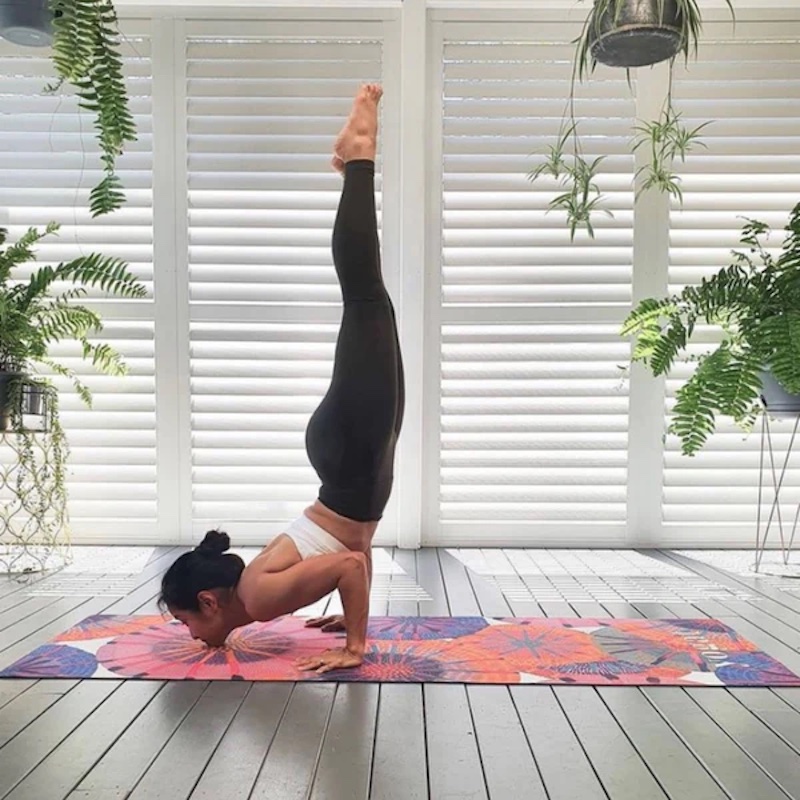The Evolution of Exercise Mats: Understanding Yoga and Pilates
The journey of exercise mats has been a remarkable evolution. Yoga and Pilates, two distinct practices, have profoundly shaped this transformation.
Pilates: A Brief History
Pilates started in the early 20th century, invented by Joseph Pilates. Designed initially for rehabilitating soldiers, it has grown into a widespread practice focusing on strength, flexibility, and mind-body awareness.
Yoga: Ancient Practice Meets Modern Exercise
Yoga derives from ancient India, over 5,000 years ago. Today, it blends traditional spiritual elements with physical postures, offering a holistic approach to well-being. The choice of mat can significantly impact the effectiveness of its practice.
Key Differences Between Pilates and Yoga Mats
Choosing between a pilates mat and a yoga mat is more than a matter of preference. It involves understanding the key differences between them, which can greatly affect your comfort and performance during workouts. Let’s explore these differences in depth to help you make the best choice for your practice.
Thickness: Comfort vs. Balance
Pilates mats tend to be thicker for extra cushioning. This is because Pilates exercises often involve lying down with your spine, hips, or knees pressing against the mat. A thicker mat provides the necessary comfort to perform these movements without pain. In contrast, yoga mats are thinner, which helps maintain balance in standing poses.
Density and Support
Pilates mats are denser, offering more support for the body during exercises. This density helps protect joints and bones when performing floor workouts. Yoga mats, while also providing support, are less dense to allow for a better connection with the floor – essential for many yoga poses.
Texture and Grip
The texture of a yoga mat is designed for grip, helping prevent slips during poses. This textured surface allows for stability during a range of movements. Pilates mats, though often smoother, still provide enough traction so that you can move comfortably without slipping.
Material Considerations
Materials for pilates mats and yoga mats vary. Pilates mats often use foam or PVC for extra cushioning. These materials provide durability and comfort. Yoga mats may use natural rubber or TPE, which offer eco-friendliness and a firm grip. Consider what materials align with your environmental values and performance needs.
How to Choose the Best Mat for Your Practice
Choosing your mat begins with a self-assessment. Reflect on your routines and comfort needs.
Assessing Your Personal Needs
Think about your preferred exercises. Do you do more Pilates, or is it yoga? Weigh your personal comfort against the need for stability. Pilates might require a thicker mat for cushioning. Yoga may need less thickness for balance.
Traditional Studio vs. Home Practice Considerations
Where do you practice mainly? The studio’s thick mats are great but may not fit well at home. For home workouts, you need a mat that’s easy to store and suits your space.
Evaluating Mat Durability and Eco-Friendliness
Check mat materials for longevity and environmental impact. Are you into sustainable living? Then, choose a mat made of natural rubber or TPE. They are eco-friendly and durable.

The Impact of Mat Thickness on Your Workout
Choosing the right thickness for your exercise mat is crucial. It affects comfort, stability, and safety during your workout.
When Thicker is Better: Benefits for Pilates
Thicker mats, typically around 6mm to 15mm, are ideal for Pilates. They offer generous cushioning to protect your spine, hips, and knees. This reduces the risk of pain and injury. A dense mat also helps in performing Pilates moves safely. It ensures that your body gets the necessary support for exercises like roll ups and jackknifes.
The Balance of Thickness in Yoga Practice
Yoga mats are usually between 3mm to 5mm thick. This is to provide a stable surface for standing poses and balance. A mat too thick can affect your connection to the floor and make poses harder. A thinner mat aids in maintaining proper body alignment. It enables you to execute poses with precision. However, ensure it still offers enough cushioning for seated and floor poses to avoid discomfort.
Size and Portability of Exercise Mats
When selecting an exercise mat, size and portability are essential to consider.
Length and Width: Does Size Matter?
Yes, the size of your exercise mat does matter. Pilates mats typically offer more width and length. This provides ample space for a variety of Pilates exercises, including rolling and stretching. They often exceed 68 inches in length to accommodate different body sizes and movements.
Yoga mats, on the other hand, usually measure around 68-70 inches long and 24 inches wide. This standard sizing ensures sufficient space for most yoga poses. However, if you’re taller or prefer extra space, longer yoga mats are available, some reaching up to 72 inches.
Travel-Friendly Options for Yogis and Pilates Enthusiasts
For those on the go, travel-friendly mats are a must. Lightweight, thin yoga mats are easy to fold or roll, taking up minimal space in luggage. Some even come with carrying straps or bags for added convenience. Pilates practitioners might opt for foldable mats. These offer greater cushioning yet still provide some degree of portability for travel.
Consider your routine, whether you frequent a studio or practice at home, and how often you travel with your mat. Balancing the need for comfort with ease of transport will guide you to the right choice.
Health and Safety: Selecting the Right Mat to Prevent Injury
Selecting the right exercise mat is a critical decision for both comfort and injury prevention.
Cushioning and Joint Protection
When it comes to protecting your joints, the right mat thickness and density are essential. A pilates mat that’s thicker provides ample cushioning. It shields your spine, hips, and knees during floor exercises. Thick mats help prevent injuries from harsh impact. A yoga mat, although thinner, should still offer some padding. It needs to shield your body during various postures without impairing balance.
Ensuring Proper Grip to Avoid Slips
For safe exercise sessions, a mat’s grip is as crucial as its cushioning. Avoid slips and falls by choosing a yoga mat with a textured surface. It should allow you to hold yoga poses without sliding. A pilates mat also needs a non-slip surface. This prevents unwanted movement during exercises. Secure grip on both types of mats ensures better stability and safety.
Choose a mat that provides both the right cushioning for protection and a reliable grip for safety.
Integrating Mindfulness into Your Choice
When selecting an exercise mat, adopting a mindful approach is beneficial. Mindfulness involves awareness and intention. Consider your values and the impact of your choice, both personally and environmentally.
The Role of Materials in Conscious Practice
Choosing the right materials for your exercise mat is a mindful practice. Materials like natural rubber or TPE reflect a commitment to sustainability. They are gentle on the planet. Select a mat made from eco-friendly materials if earth-friendliness matters to you.
Mats made from non-toxic, biodegradable substances contribute to a healthier environment. They are better for your health too. Being mindful of materials is not just good for the earth. It enhances your practice by aligning your exercise with your values.
The Future of Eco-friendly Exercise Mats
Eco-friendly exercise mats are becoming the norm. They represent the future of fitness gear. Consumers demand products that do not harm the planet. Companies are responding with innovative, sustainable mats.
Imagine practice on a mat that is both high performing and earth-conscious. Eco-friendly mats offer this advantage. They seek to reduce waste and avoid harmful chemicals. As trends move towards sustainability, the mats we use play a part in a larger movement. This is towards a healthier and more responsible world.


